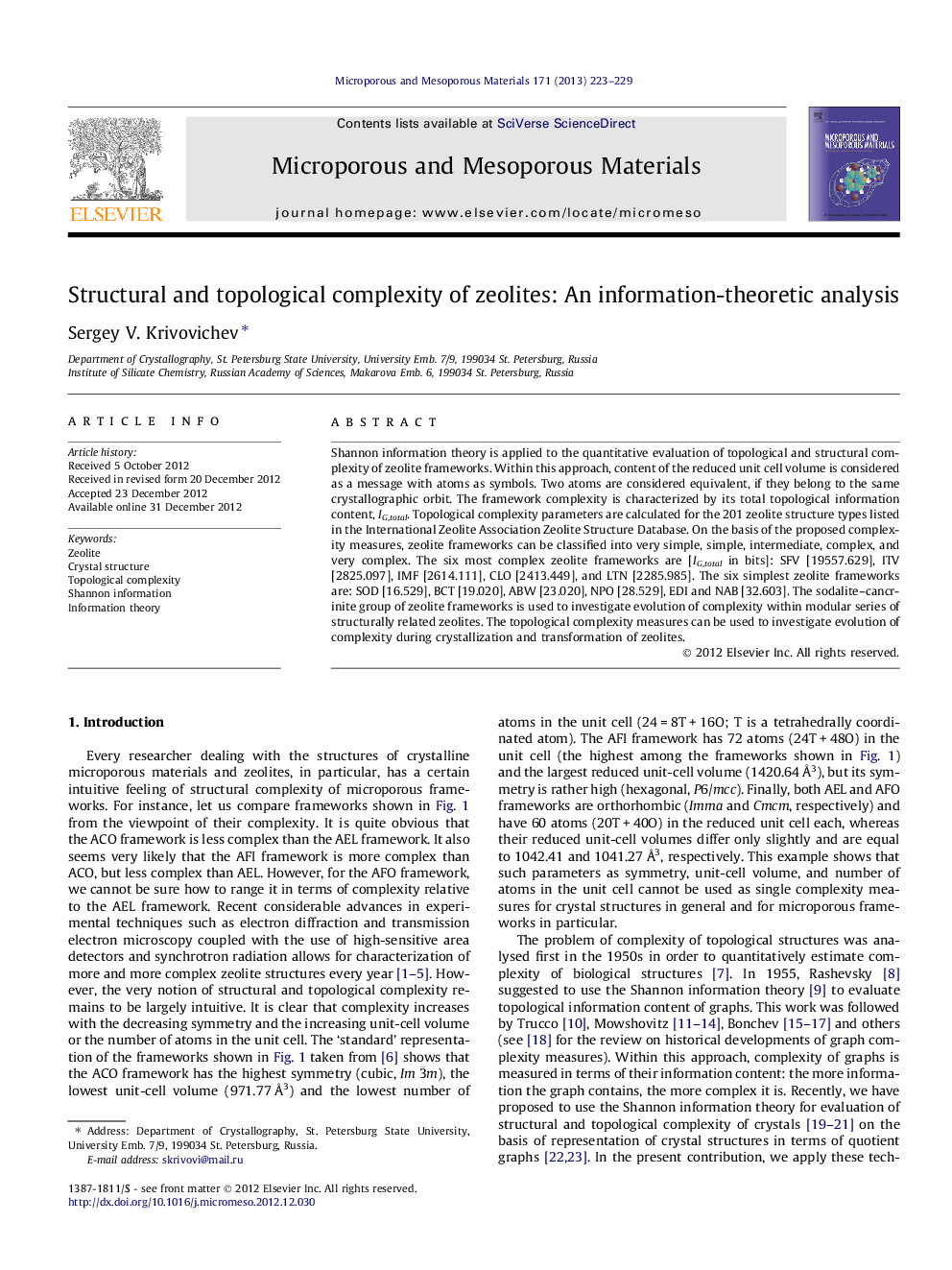| Article ID | Journal | Published Year | Pages | File Type |
|---|---|---|---|---|
| 73828 | Microporous and Mesoporous Materials | 2013 | 7 Pages |
Shannon information theory is applied to the quantitative evaluation of topological and structural complexity of zeolite frameworks. Within this approach, content of the reduced unit cell volume is considered as a message with atoms as symbols. Two atoms are considered equivalent, if they belong to the same crystallographic orbit. The framework complexity is characterized by its total topological information content, IG,total. Topological complexity parameters are calculated for the 201 zeolite structure types listed in the International Zeolite Association Zeolite Structure Database. On the basis of the proposed complexity measures, zeolite frameworks can be classified into very simple, simple, intermediate, complex, and very complex. The six most complex zeolite frameworks are [IG,total in bits]: SFV [19557.629], ITV [2825.097], IMF [2614.111], CLO [2413.449], and LTN [2285.985]. The six simplest zeolite frameworks are: SOD [16.529], BCT [19.020], ABW [23.020], NPO [28.529], EDI and NAB [32.603]. The sodalite–cancrinite group of zeolite frameworks is used to investigate evolution of complexity within modular series of structurally related zeolites. The topological complexity measures can be used to investigate evolution of complexity during crystallization and transformation of zeolites.
Graphical abstractFigure optionsDownload full-size imageDownload as PowerPoint slideHighlights► Shannon information theory is used for quantitative evaluation of zeolite complexity. ► Zeolite frameworks are classified according to their topological complexity. ► Complexity evolves during zeolite crystallization.
